27 January 1939 saw the maiden flight of Lockheed’s latest design, the Lightning. Despite being overshadowed throughout World War Two by the likes of the Spitfire and Mustang, the Lightning would prove to be a crucial element in the Allies’ success in the European, Mediterranean and Asia-Pacific theatres. Whilst widely overlooked when assessing the key aircraft which won the war for the Allies, the P-38 was certainly a machine that had the credentials to garner such an accolade. Kieran Lear reports on the P-38 Lightning’s 75th anniversary for GAR.
The tale of the P-38 Lightning dates back to the 1930s, and a time where combat design and manufacture was at its thriving peak. Rather than obsolete biplanes that had seen regular service with armed forces around the world since the Great War, sleek, modern monoplane designs with retractable undercarriages and optimised designs in the cockpit were imperative for aeronautical engineering companies of the day.
Based at Burbank, California, the Lockheed Aircraft Corporation embraced the requirements needed for the US Army Air Corps (USAAC) and began designing an aircraft that would reconcile with America’s next generation fighter requirements. Lockheed had prior experience designing aircraft such as the Vega – a single-engine, high-wing monoplane transport aircraft of the 1920s; thereafter, Lockheed focused its attention on transport, and designed a healthy selection of civil aeroplanes, including the Electra. Lockheed also boasted a “trump card” in that it employed a breadth of incredibly talented designers – one being Clarence L. ‘Kelly’ Johnson.

The XP-38 at March Field in January 1939.
© David Rider Collection
In January, 1937, Lockheed responded to the USAAC’s request for a new fighter. This new design had to have a maximum speed that comfortably exceeded 360mph and could climb sufficiently. Technically speaking, the USAAC called for the design to climb to 20,000ft within six minutes – a demanding requirement for the time, particularly when you consider that only a few short years before, aerial combat was still very much the realm of the biplane.
Most aircraft manufacturers and designers felt the requirement was too ambitious and the available engine power of that era could not satisfy that capability. Lockheed believed the way to overcome this obstacle was to use the method of supercharging, which, simplistically, meant more air would be sucked into the engines to allow more power through to the engine core. This is due to the air becoming less dense at higher altitudes, meaning less air would be sucked into the engine when the aircraft was operating towards the fringes of its altitude endurance. With the benefit of supercharging, the air was effectively forced into the engine, meaning the power would be more than adequate when climbing. The idea of the P-38 was developed over the years around the idea of two supercharged engines with turbos situated in the boom behind both engines. Whilst efficient and effective, this concept did have several flaws, such as insufficient supercharger intercoolers which could compromise the performance of the engines.

One of the YP-38s in flight in 1943.
© Ronnie Bell Collection
The design of the XP-38 took up the whole of 1937 and 1938, with the first flight on 27 January 1939. The revolutionary design Johnson had envisaged two years prior was much in evidence; a beautiful, unique twin boom design with two Allison engines and tricycle undercarriage, as well as Fowler flaps which allowed the aircraft to operate more smoothly and cooperatively for the pilot at low speeds. To the pilot’s benefit, a new bubble canopy was incorporated, allowing superb vision outside; a critical feature which would aid pilots crucially in military service over the next couple of years, where visibility in air combat could decide a dogfight. The aircraft was years ahead of its time and received full USAAC backing, especially from the Chief of the USAAC, Gen. Henry ‘Hap’ Arnold.
The prototype first gained public attention in a rather spectacular way. Benjamin Kelsey, the test pilot for the aircraft, proposed a speed dash from California to Wright Field in Ohio, but this turned into a fast, cross-country flight that incidentally achieved a speed record – flying from California to New York in just under eight hours. However, the XP-38 crashed on landing to Mitchel Field after the aircraft’s carburetors iced up whilst on approach to land, leaving both engines unresponsive, but the seeds were already planted for the P-38’s success. The Army Air Corps and Hap Arnold were impressed with the record set by the aircraft and Lockheed was ordered to continue development of the XP-38.
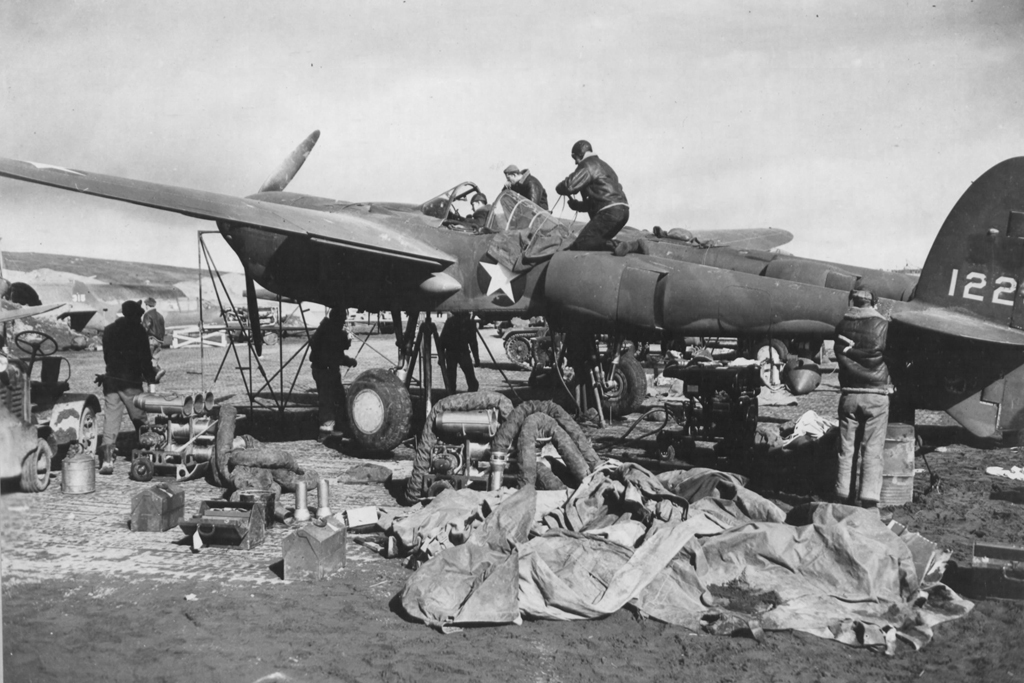
A P-38E of the 54th FS undergoes maintanence following a landing accident on the Aleutian Islands in 1942.
© Fold3
By all accounts, it was tremendously comfortable to fly and Lockheed were soon handed a contract to manufacture 13 YP-38s. However, construction of the fighter was delayed and what should have been a smooth couple of months to iron out the gremlins that the early P-38s had possessed turned into an agonising nine months due to bad management within Lockheed’s headquarters. Early P-38s were also highly vulnerable to compressibility; diving at high speed proved to be costly for pilots flying the P-38 as the velocity would increase, causing the nose to tuck under, thus locking the controls. The problems of compressibility were first revealed in May 1941, and it wasn’t until 1942 that the issue was resolved by Lockheed, who had thoroughly researched the phenomenon using a test-bed P-38 – the issue was subsequently put to bed with the incorporation of dive brakes to the aircraft.
Despite the compressibility problem, the USAAC pushed ahead with the fighter, and the British Royal Air Force and French Air Force requested the P-38 for use in their operations; the French had initially ordered 417 P-38s before their surrender in 1940, and the RAF placed an order of 250. Three were delivered to the RAF, which consequently deemed the P-38 unsuitable for combat due to the absence of the aforementioned turbo superchargers and lack of counter-rotating propellers – the Lightning was, at this stage in its development, inferior to the Spitfire Mk.V at high altitude (indeed, consideration was given to installing Merlin power plants, but this was rejected by the US Army). The remaining P-38s destined for the RAF were refused and thereafter used for experimental and training roles for future P-38 projects. It wasn’t until the P-38D model, which boasted updated capabilities such as self-sealing fuel tanks, improved armour plating, low-pressure oxygen systems and a bulletproof front windscreen, that the P-38 was brought up to combat readiness.

Men of the 94th FS discuss some of the mission markers adorning the nose of one of their P-38Fs in Italy.
© Fold3
The P-38D lived up to the initial requirement set by the USAAC in 1937. It was fast, reaching maximum speeds of 390mph at 25,000ft. However, the Lightning was still coming up short to other contemporary Allied fighters of the time, and the P-38D designation was shelved in favour of the P-38E. The ‘E’s armament, which consisted of one Hispano cannon of 20mm and four machine guns, became the basis of the P-38’s awesome, centralised fire power through to the end of World War Two.
It wasn’t until the further developed P-38F version became available that the true potential of the P-38 Lightning shone through and from there on in, the Lightning underwent near continuous improvement, with several new marques produced throughout World War Two. The P-38F allowed the aircraft to develop a swing-role occupation, with the ability to carry bombs or drop tanks. The later P-38G variant was a slightly developed version of the F, albeit with improved Allison V-1710-51/55 engines and updated radio equipment aiding the pilot. Revised engines also brought improved performance and the Lightning could now reach 402mph at 25,000ft.
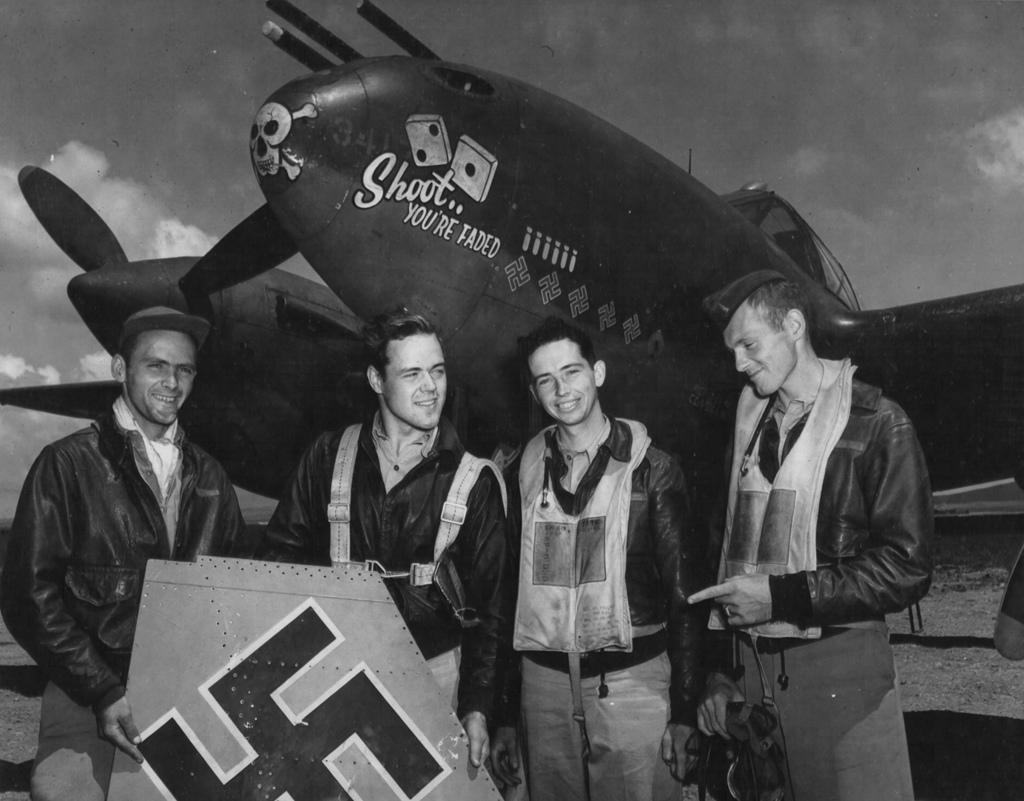
Pilots of the 27 FS stand jubilant in front of one of their P-38Gs after turning the tide against 24 Luftwaffe fighters that bounced them.
© Fold3
Development continued apace through the H and J models; whilst broadly similar, the P-38J could obtain 1475hp at 30,000ft compared to the P-38H’s 1240hp at 27,000hp. The speed was further increased to 414mph at 25,000ft, but it wasn’t until the previously mentioned diving brakes were fitted in 1944 that the P-38 become hugely successful in combat. Aileron boost and improved cockpit heating were installed into the aircraft as well. The P-38L version of the Lightning was the most advanced and capable in combat. The Allison engines were improved to their maximum capability but one revolutionary design for the P-38L was the incorporation of a tail warning radar that warned the pilot of a hostile aircraft in the wake of his machine.
Possibly the most radical development of the P-38, the P-38M, was in fact a two-seat, radar equipped version of the Lightning. It was intended to be used as a night-fighter to replace the venerable Douglas P-70 until the P-61 Black Widow was available. The second seat was to be for a radar operator and housed behind the pilot in a slightly altered cockpit layout, and the canopy was hastily re-jigged to create a more defined bubble shape to allow more headroom for the operator. The radar, AN/APS-4, was mounted in a fairing beneath the nose and flash deflectors were added to the P-38M’s armament. P-38M conversions arrived in the Pacific in July, 1945, but the war ended before the type could be put into action against the Japanese. These developments illustrate perfectly the adaptability of the Lightning, as the aircraft was modified and upgraded where possible to enhance its capabilities in each theatre it served in.

P-38Hs of the 38 FS warm up their engines at their Nuthampstead base prior to a bomber escort mission in 1943.
© Fold3
With testing of the Lightning at Boscombe Down revealing it to fall short of RAF requirements, the Lightning’s greatest successes came with the USAAF in Europe and the Pacific. Once in combat, its range, and the benefit of a second engine which could, in itself, bring the Lightning home safely should one of the engines be lost, made the Lightning a potent long-range fighter, ground attack and reconnaissance aircraft. The first fighter Lightnings to see action in the Pacific theatre were from the 8th Photo Group in Australia and the 54th Fighter Squadron, based on the Aleutian Islands, during the summer of 1942, and the first in-theatre kill came in August 1942 when a P-38E downed a H6K Mavis reconnaissance aircraft in the Aleutians. Initial serviceability was, however, poor, and it wasn’t until late 1942 – once initial issues had been countered – that the Lightning entered combat in greater numbers.
The greatest exponents that operated the P-38 in the Pacific were the 49th and 475th Fighter Groups, which flew the aircraft right up until Japan’s surrender in August 1945. The P-38J and L versions proved more than capable of mixing it up with Japanese fighters and scoring victorious against their foes and authors on the subject have designated the P-38 as being far superior to the Japanese Air Force’s equivalent fighters in the south-west Pacific. P-38s first entered combat against Japanese fighters on 27 December 1942, downing 12 aircraft over Buna, and by early 1943 several Lightning pilots had already attained ‘ace’ status in the theatre. In March 1943, the Lightnings of the 35th and 49th Fighter Groups played a pivotal role in mauling Japanese fighter cover during the Battle of the Bismark Sea, further illustrating the aircraft’s capabilities as a fighter.

A P-38 receives some TLC between sorties.
© Fold3
It also had a successful career as a ground attack aircraft as well, with the type aiding in victories in New Guinea and the Philippines. Lightning’s featured heavily as reconnaissance platforms throughout the Pacific theatre also, due to the excellent range the P-38 had, which was fundamental in enabling the US to scout Japanese military movements and undertake strategic planning and deep penetration combat operations; indeed, P-38Ls operating from Dutch New Guinea could fly some 950 nautical miles to engage the enemy in combat for 15 minutes before returning to base, making it an invaluable tool for the USAAF. Famous aviator Charles Lindbergh was instrumental in teaching Lightning pilots to exploit the aircraft’s capabilities to their fullest, identifying an engine speed of 1,600rpm, auto-lean set carburetors and maintaining a constant speed of 185mph in transit to reduce fuel consumption as the keys to successful long-range endurance. During his time with the 475th FG in the Pacific, Lindbergh held classes to train pilots on how best to utilise their mounts and with the correct handling, the P-38 was able to exceed the pilots’ expectations whilst flying long-distance operations to engage the Japanese over their territory.
Lightnings also participated in the infamous killing of the mastermind behind the Pearl Harbor attacks, Admiral Yamamoto. On 18 April 1943, 16 P-38s of the Thirteenth Air Force’s 339th FS flew 350 nautical miles at low level and successfully intercepted two Mitsubishi G4M ‘Betty’ bombers and their A6M ‘Zero’ escorts, which were carrying the Admiral and his entourage. One bomber crashed into a jungle whilst the other crash landed into the sea, with Yamamoto’s body identified the next day – revenge for the thousands killed and wounded at Pearl Harbour, executed with brutal efficiency by one of America’s strongest fighter platforms, an aircraft which was developed into a strong combat aircraft, you could say, as a direct result of Japan’s surprise offensive in the Pacific.

A P-38J of the 27 FS takes of from its base in Corsica on a mission.
© Fold3
The P-38 was the aircraft of choice for more than 100 Allied aces of the war, many of which fought within the Pacific theatre, and Major Richard Ira Bong was the Pacific war’s leading Allied ace with a total of 40 victories against Japanese aircraft. Known for his skill as an aviator, Bong would always silently approach his airfields and enter a loop with feathered engines before landing his aircraft after each mission. These feats, along with his undeniable skill in combat, gained him respect that was sought after by so many young pilots of the time. The second highest scoring ace of the Pacific war was Thomas McGuire Jr, who was credited with 38 victories – also in the P-38 Lightning – and in all, Lightnings downed almost 2,000 Japanese fighters during the conflict.
The Lightning was far less numerous in the China-Burma-India theatre, but was still the most modern, contemporary fighter of the day, up until the arrival of the awesome P-51 Mustang which largely exceeded the Lightning’s capabilities across the board, particularly with the all-important increased range, which made the Mustang so famous, and so deadly, in all theatres it was utilised in.
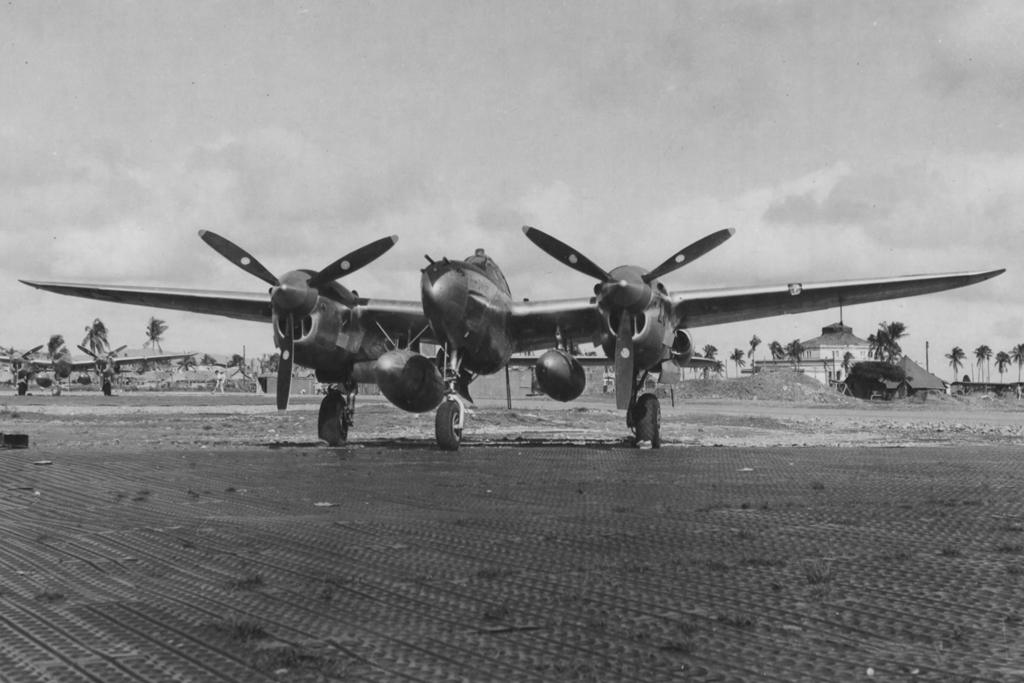
A P-38L of the 475 FG at rest on Lingayen Airstrip, Luzon, Philippine Islands in the summer of 1945.
© Fold3
In a testament to its effectiveness in combat, author Donald Nijboer wrote that “the introduction of the P-38 gave the USAAF a distinct advantage in 1942. It gave the fight to the enemy and almost certainly on every occasion, won. In the Pacific Theatre, Fifth and Thirteenth Air Force P-38s would sweep the sky of any Japanese aircraft, with a kill ratio of 20:1 in the P-38’s favour”, whilst other authors state that the P-38J’s arrival in the Pacific in 1944 were the aircraft’s greatest days, and a point at which the aircraft truly performed to the level envisaged by Lockheed.
The P-38 Lightning also played a crucial role in the Mediterranean and European theatres of war from 1942. In the Med. the Lightning achieved outstanding success, hitting the German and Italian forces hard, particularly when tasked with cutting the Axis resupply air bridge, which saw Lightnings dispatched against German and Italian fighters and transports with startling efficiency. Despite the P-38 proving successful as a fighter in the Pacific, the performance of the type in Europe was quickly overshadowed by the arrival of aircraft such as the Republic P-47 Thunderbolt, North American P-51 Mustang and later marks of Supermarine Spitfire, and these latter types were utilised in greater numbers than the Lightning.

A formation of three 9 AF aircraft.
© Fold3
Initially, deployments of USAAF P-38s to Europe took place during the summer of 1942, when elements of the 1st FG made transatlantic crossings through Greenland and into Scotland. The 1st FG was quickly followed across the North Atlantic by the Lightning equipped 14th, 78th and 82nd Fighter Groups. At the end of the Lightning’s entry into Europe, the need for an escort for USAAF bombers wasn’t highlighted as a priority (the bomber offensive beginning in force in 1943), so P-38 units were sent to North Africa to join the Twelfth Army Air Force and help with results in Morocco. The P-38 was quickly nicknamed the “Fork-Tailed Devil” by the Germans due to their hindrance of German supply lines through effective tactical ground attack sorties. Whilst certainly a thorn in the side for German ground divisions, earlier versions of the P-38 were proven to be lacklustre in aerial combat when pitted against German fighters such as the Focke-Wulf Fw-190 and later marks of Messerschmitt Bf-109.
From the late summer of 1943, the 8AF were given preference with P-38 deliveries due to the need for a suitable escort fighter for the B-17 and B-24 heavy bombers, which had been harassed by the Luftwaffe over occupied Europe with devastating consequences (attrition rates reaching 30% on occasion), and for a time in 1943, the Lightnings were the key component responsible for bomber protection. P-38H Lightnings were the first designations to adapt to this role and escort duties commenced on 15 October 1943.

A damaged Lightning limps home – a testament to the aircraft’s ability to take hits and keep on going.
© Fold3
However, problems persisted with the P-38 as the type undertook these duties, such as inadequate cockpit heating (leading to frostbite for the pilots) and engine problems above 25,000ft; at this altitude, the turbo-supercharged intercoolers became inefficient and overheated air was fed into the carburettors, causing the engines to overheat. Naturally, this hindered the Lightning’s ability to provide long-range, high-altitude escort for the heavy bombers of VIII Bomber Command, the role for which is was primarily utilised in at this point in the war.
The problem was eventually combated with the arrival of the P-38J, which benefitted from superior intercooler installations beneath each engine. Despite the gremlins plaguing the P-38 through its service life in Europe, the range the P-38 could reach – 700 nautical miles in all – was crucial as it had the capability to escort bombers deep into the heart of Germany at a time when the Luftwaffe was at its strongest, and most potent. This penetration was put to good use in both the European and Pacific theatres of operation, providing both defensive support for the bombers and an offensive mount from which the USAAF could take the fight directly to the Luftwaffe, be it on the ground or thousands of feet above the clouds. Furthermore, it enabled the P-38 to excel as an escort where other types, such as the P-47 Thunderbolt, fell short at this point in the war.

On an escort mission for these 15th AF B-17s over Germany this P-38 was hit by flak, the pilot subsequently feathered the prop and stuck with a group of bombers for protection.
© Fold3
The capabilities of the P-38 also meant that the aircraft could be used for other roles during its wartime career, including a radical “Droop Snoot” version. Largely the creation of Colonel Cass Hough, the Droop Snoot was a conversion of the P-38 that carried a bombsight and bombardier in the nose of the aircraft.
Changes involved all armament and equipment being removed from the nose, an escape hatch fitted on one side, a Plexiglas moulding fitted to the front of the nose, a Norden bombsight fitted, together with a seat for the bombardier and oxygen supply. In operations, the Droop Snoot would lead a tight formation of standard P-38s, all carrying bombs on the wing shackles, to make high speed “hit-and-run” attacks on German installations. The bombload for the Droop Snoot comprised two 1,000lb bombs, but a maximum of six 500lbs could be carried if required. After successful trials at Bradwell Range, P-38 Droop Snoots were employed by all of the 8AF’s P-38 units, which would go on to successfully lead P-47 Thunderbolts in ground attack operations across the Continent.

The cramped interior of the P-38 much in evidence in this surviving example.
© Mike Shreeve – Global Aviation Resource
The P-38 was also fundamental in a Photo Reconnaissance (PR) role and thus was designated the F-4 and F-5. Despite receiving critical losses due to the missions involving the P-38s going solo and unarmed into enemy territory, the missions themselves proved invaluable and the Lightning was now considered not only as a more than capable fighter, but also a more than capable PR platform. These versions of P-38 saw commendable service in North Africa as well as all across Western Europe. Unarmed P-38 Lightnings relied solely on their speed to evade interception by the enemy, whilst their impressive range statistics allowed photographs of damaged German refineries as well as German lines to be taken for higher command to view.
The 7th Photo Reconnaissance Group was established in England in July 1943 and every type of PR Lightning was used by the PRG right through to the end of the war in Europe. Their primary task was to support 8AF operations, with the P-38s trailing the bombers over north-west Europe. The task proved successful right through until the Messerschmitt Me-262 jet entered service with the Luftwaffe, when P-51 Mustangs were required to escort the P-38s to protect them against the faster, superior ‘262s. In all, Lightnings flew approximately 130,000 sorties with a 1.3% loss rate overall; considering the Mustangs experienced a very similar rate of loss in combat, the Lightning – outnumbered as it was by the Luftwaffe during 1942-43 – stands up favourably against the glittering record of the P-51.

The under nose radar and extra bubble canopy for the radar operator are clearly evident in this image of a P-38M.
© Fold3
America wasn’t the only country to operate the Lightning: separate to a French Air Force order of 1940, France ordered PR Lightnings throughout the war, seeing service with the Free-French. The Lightning was made famous in Free French service by French national icon and pioneering aviation, aristocrat, poet and author Antoine de Saint-Exupéry’s exploits; assigned to the F-5 Lightning during World War Two, Saint-Exupéry flew sorties in Algiers, North Africa, where he became renowned for his habit of reading and writing whilst piloting his F-5B PR Lightning. One story even recalls Saint-Exupéry holding over his base for an hour whilst finishing a novel! Saint-Exupéry disappeared during a reconnaissance mission over the Rhone Valley on 31 July 1944, in the lead up to the Allied invasion of southern France. His body was never found.
The Lightning did see some export success and Australia was one such customer, operating five examples of the P-38E which saw service with the RAAF’s No1 PR Unit as well as 75 Squadron. Post-war, Italy was a heavy user of the P-38, as were nationalist Chinese forces, the Dominican Republic and Honduras. Whilst P-38s proved to be a more than capable war machine during World War Two, soon after VE Day and VJ Day in 1945, the aircraft was declared obsolete. Many were scrapped, whilst some were used by aerial survey companies throughout the world.
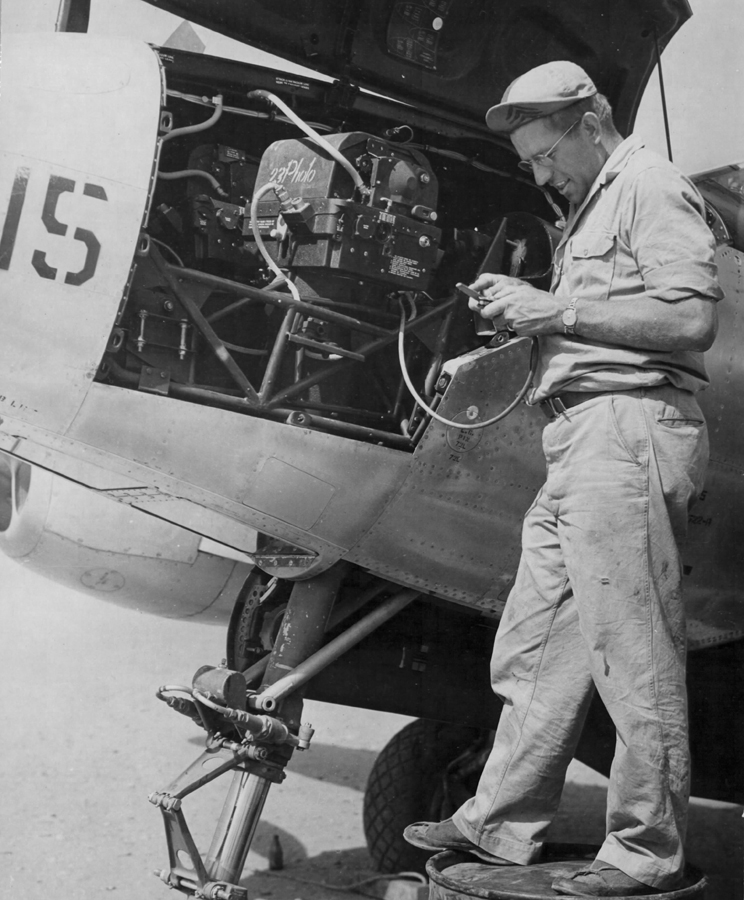
A camera technician works on the camera in nose of an F-5 on Corsica in 1945.
© Fold3
In peacetime, some P-38 Lightnings were sold to private buyers who utilised the aircraft as air racer; a sport which still has reasonable prominence today. One particularly notorious racing P-38 was nicknamed ‘White Lightnin’’; owned and operated by the late Marvin ‘Lefty’ Gardner in the USA it was, at the time, the most famous P-38 in the world, flying in air races including the major contests at Reno and Cleveland. Unfortunately, this P-38 suffered an in-flight engine fire in 2001, which saw the end of its flying life in Gardner’s care and it was later sold on to the Flying Bulls collection, based in Salzburg, Austria. Since 2009, P-38L N25Y has been making appearances at airshows all across Europe, including prestigious events such as Flying Legends, La Ferté-Alais, and ‘Airpower’ at Zeltweg, with Chief Pilot of the Flying Bulls collection, Raimund Reidmann, at the controls of the aircraft in recent years.
Despite the cost of restoring, maintaining and operating a twin-engine World War Two fighter, there are several other P-38 Lightnings still airworthy, all of which are based in North America. These include a P-38L based with Vintage Fighters in California, P-38L ‘Tangerine’ based at Tillamook Air Museum in Oregon, P-38L ‘Ruff Stuff’ based in Minnesota, P-38L ‘Thoughts of Midnight’ based with Comanche Warbirds LLC, P-38J ‘23 Skidoo’ based at the Planes of Fame Air Museum in Chino, California, and P-38F ‘Glacier Girl’ owned by Rod Lewis and based in San Antonio, Texas.

Steve Hinton at the controls of Planes of Fame’s P-38 Lightning.
© Mike Shreeve – Global Aviation Resource
The latter P-38, ‘Glacier Girl’ gained a lot of attention due to the nature of its recovery – discovered underneath a Greenland glacier in 1992, the aircraft was eventually removed from the ice and restored to an airworthy condition; a tremendous achievement by all involved, and one which placed the Lightning firmly in the eyes of the aviation enthusiast to a degree unseen since ‘Lefty’ Gardner was in his prime.
In 2007, the plan was for P-38F ‘Glacier Girl’ to undertake the same transatlantic crossing from America to England, the route which the aircraft was meant to undertake in 1942. Unfortunately, Steve Hinton, the pilot flying the P-38, experienced a coolant leak in the No.2 engine in Goose Bay, Labrador, which temporarily grounded the aircraft, forcing Steve to miss out on the opportunity to complete this feat. It is hoped that ‘Bolero’ (as the Operation was originally called) can be repeated in the near future, and whilst each year sees rumours resurfacing, hopes are fading that the operation will ever be able to go ahead.
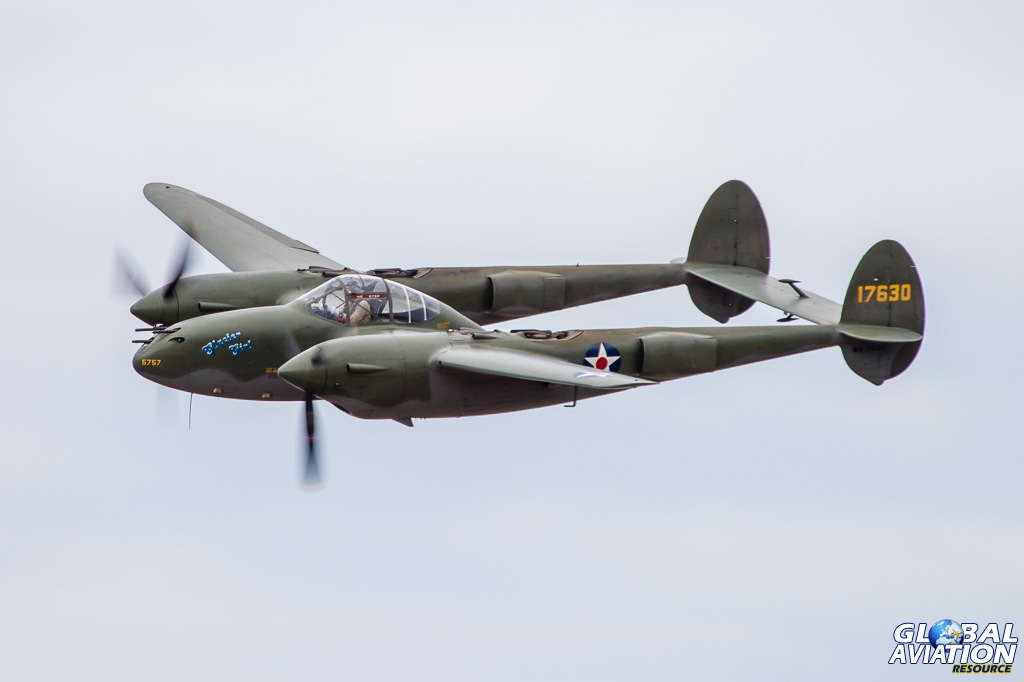
The story of ‘Glacier Girl’ is well documented, making it one of the most well-known Lightnings in the world today.
© Rob Edgcumbe – Global Aviation Resource
Despite the fair number of privately owned and operated Lightnings in the USA and, of course, the single European example, the P-38 has proven to be a difficult aircraft to maintain, both technically and economically. Steve Hinton Jr, current Reno Air Race champion, has had experience of maintaining the Planes of Fame Museum’s Lightning and reiterates the point that “the P-38 is a very maintenance heavy airplane. It took on an average of six crewmen to maintain the ’38, so long as there were sufficient parts” – this being a luxury few private operators are likely to enjoy in the modern era. But, Hinton states, “from what I have been told, the flight characteristics are remarkable and it is one of the most stable gun platforms”, further attesting to the aircraft’s popularity amongst its crews and reputation as a highly capable war machine, particularly in later life.
If we read through the history books, and more specifically our aviation heritage through the years, it’s a common occurrence that we neglect revolutionary aircraft that spearheaded a generation that paved the way for ingenious aircraft design for years to come. Whilst the Spitfire and P-51 Mustang took the limelight, as it were, for the best Allied fighter in combat during World War Two, there were other aircraft that undoubtedly assisted in gaining Allied victory, and the P-38 was indeed such an aircraft. In the European theatre, Lightnings enabled daylight heavy bombing to achieve vital successes prior to the introduction of the Mustang, and even once the P-51 was introduced, it was late 1944 before it had equalled the Lightning’s combat achievements. In the Pacific, the Lightning was a key component of the air battles over Okinawa, the Philippines, New Guinea and the Solomons.

European enthusiasts will be familiar with Red Bull’s Lightning, an increasingly regular performer at airshows across the continent.
© Giel Sweertvaegher – www.apron6.com
Whilst not garnering a reputation as the best Allied aircraft of the war – it had its faults, certainly – the Lightning was a capable fighter and fighter-bomber, and enjoyed longevity as a photo-reconnaissance platform, at a time when America called for a major player in the global conflict against the Axis Air Forces. This sterling service leaves the P-38 worthy of acknowledgement as one of the most important war machines of World War Two.
It was outclassed, as the war progressed, by new technology and the next generation of fighter aircraft, but the Lightning was an adaptable machine which was put to good use by the Allies in combating the German and Japanese Air Forces and its adaptability enabled it to evolve as aerial combat required from a fighter to a reconnaissance and ground attack aircraft.

Lightnings taxi in at the California Capital Airshow 2010, led by ‘Thoughts of Midnite’.
© Mike Shreeve – Global Aviation Resource
For all of its potency as a fighter and bomber, the beautiful, almost art deco design of the Lightning personifies the charisma and character of the legendary ‘Kelly’ Johnson and hints at the revolutionary designs Johnson would go on to spearhead, such as the F-104 Starfighter, SR-71 Blackbird and the beginnings of the F-117A Nighthawk ‘stealth-fighter’.
What is important to remember, however, is that Johnson and the P-38 proved that aerial combat victory can be achieved by branching out from the proverbial single-engine low wing monoplane that one can so easily associate with the means to gain aerial dominance. Whilst not blessed with the near universal success of the Spitfire and Mustang, the Lockheed P-38 Lightning can easily be defined as a thoroughbred, a workhorse and, most importantly, a revolutionary aircraft that treated its pilots well and did the job it was originally designed for.
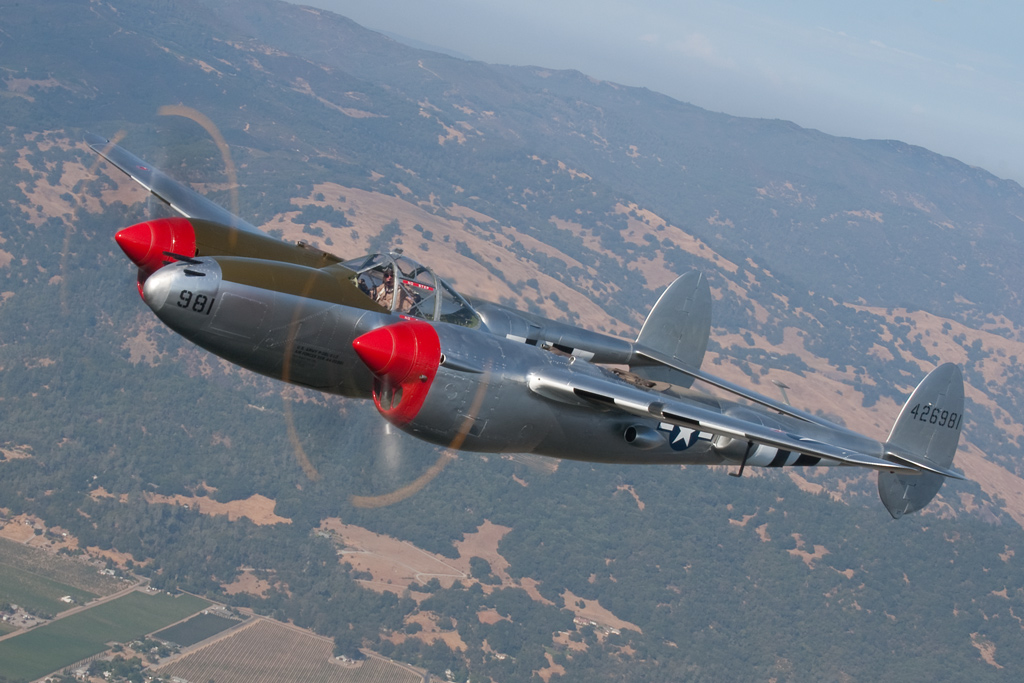
Vintage Fighters’ Lightning looking wonderful over the west coast of the USA.
© Mike Shreeve – Global Aviation Resource
The Lightning’s wartime record speaks volumes for the aircraft’s success; it entered World War Two early on, making strides towards neutralising Axis air power to the very best of its abilities almost immediately, despite a protracted development phase as Lockheed strove to keep the Lightning a potent war machine. Whether escorting bombers deep into Fortress Europe, carrying out interdiction sorties against ground targets or flying pivotal unarmed reconnaissance missions, the Lightning presented the USAAF with a vital and adaptable multi-role platform from the outset of World War Two, earning its place as one of the most important Allied aircraft of the entire conflict.

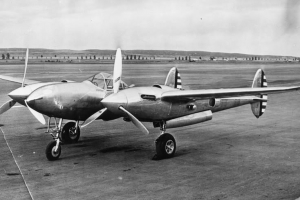
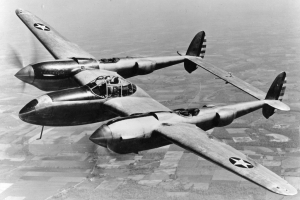








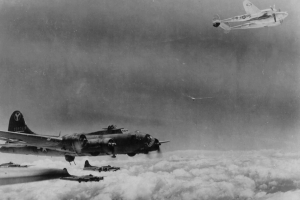

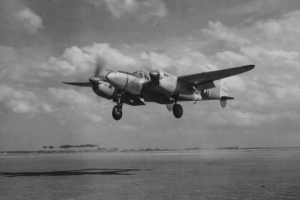




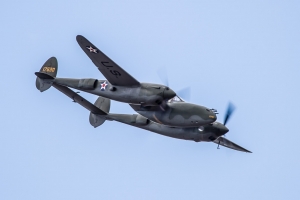
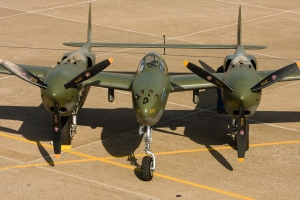



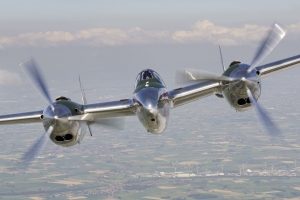
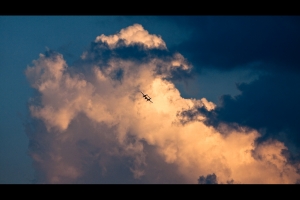
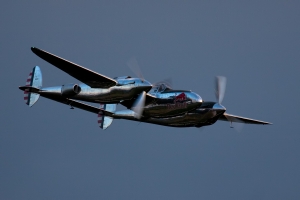




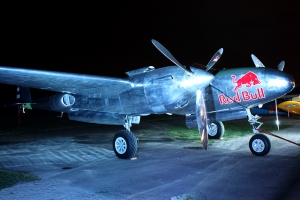



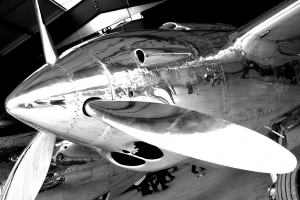



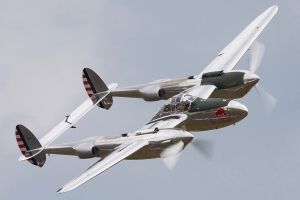

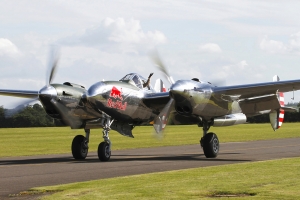

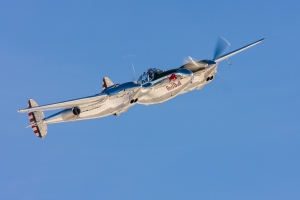


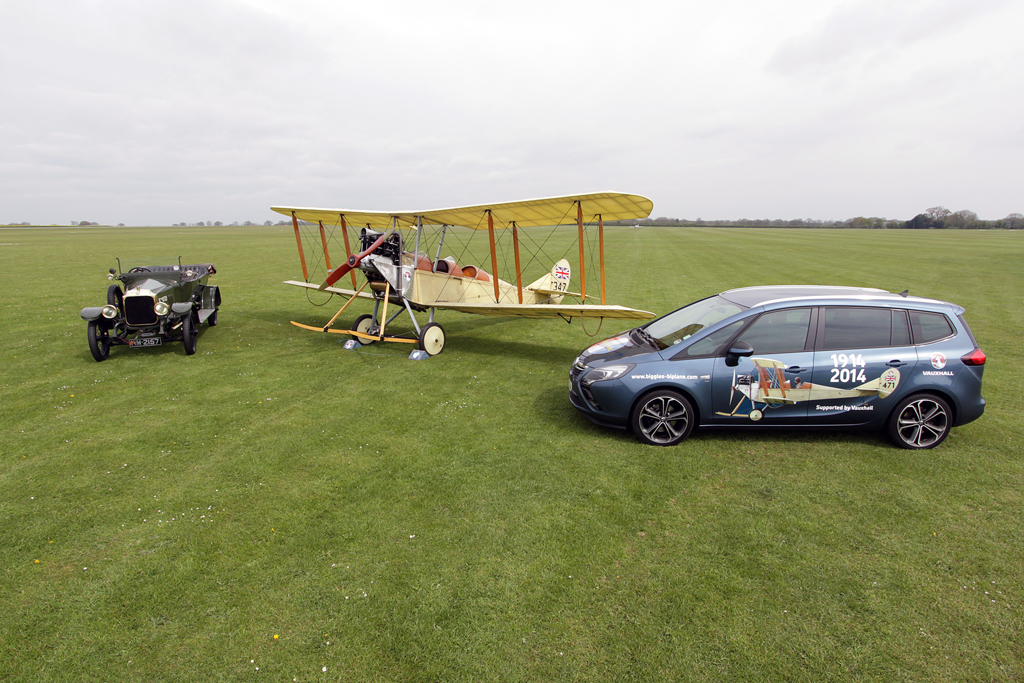

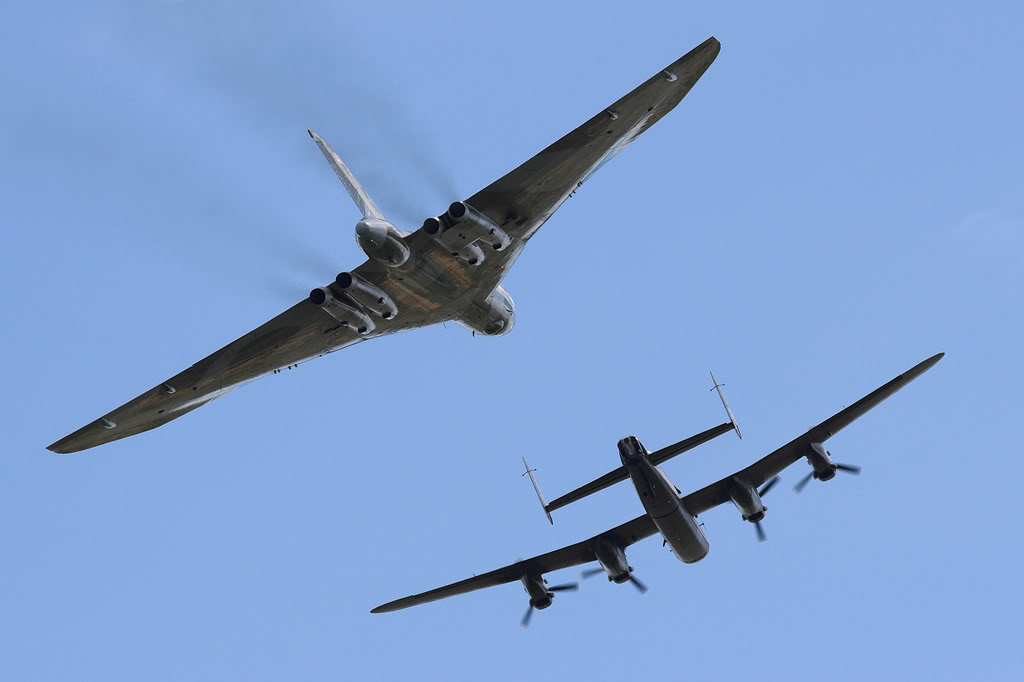
Wow it’s so disappointing how full of errors this post is. First of all, the P-38L was never outclassed by any Mustang variant. Once the kinks were worked out, it was the best fighter of the entire war.
How can you ,mention that the chin-mounted intercoolers didn’t debut until the P-38J, then try to say that the Flying Bull’s P-38 is a P-38L?
Interesting article and great pics, though I find the author is a bit overly dismissive of the P-38’s capabilities. Being at the cutting edge of innovation, the 38 had its share of teething issues. Lockheed –read Kelly Johnson– was on the ball in addressing these issues (compressibility, cockpit heating, efficient cooling, slow roll-rate) but the War Production Board was slow in allowing an interruption in production to implement the needed updates. And while the 38 was not a simple machine – especially for hastily trained pilots, those that learned to wring-out the Lightning claimed it to be unequaled in the sky (Bong, McGuire, Olds, Ilfrey; and see comments made by German ace Oberst Mackey Steinhoff).
The 38s success in the Pacific is undisputed. And any mention of a spotty record in the ETO can be attributed to General Eaker and his amateur staff’s butt-covering campaign to discredit the 38 as a capable escort after being forced to admit the failure of the bomber-in-force doctrine. In fact, the P-38 was available as escort for the 8th AF since day 1, but Eaker claimed he didn’t need them and sent the units down to the North Africa/MTO where they enjoyed considerable success. And claims over chronic serviceability issues are coincidentally unique to Eaker’s 8th AF, which was known for its lack-luster maintenance habits and poor combat readiness for all of its aircraft. And careful research into early ETO USAAF escort and fighter procedures compared to the free-lancing flexibility used later are most revealing about the increase in fighter victories for the USAAF in the ETO.
Infamous? I think not. Just keep in mind who started the war, and which side turned it into the nasty, dirty, and vicious theater it was. Yamamoto put his money down and took his chances.